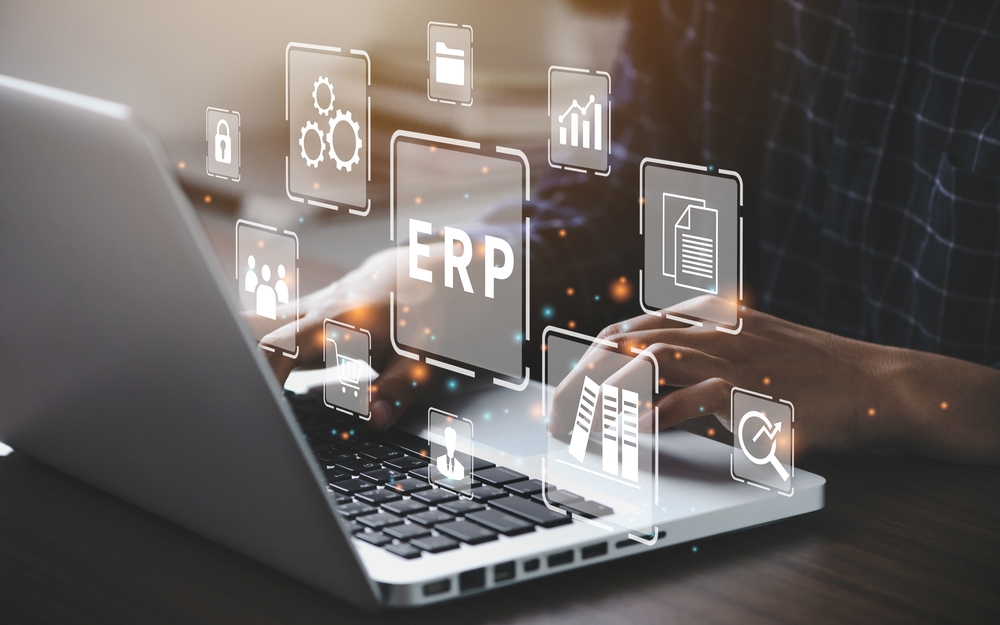ERP Change Management
Enterprise Resource Planning (ERP) systems are the backbone of large organizations. They orchestrate complex processes across critical departments, from finance to supply chain management. Unfortunately, many ERP systems are outdated, hampering the ability to reduce costs and drive revenue.

What is Change Management in ERP Implementation?
Financial and IT executives are heavily involved in selecting and integrating new ERPs—but that’s only half the battle. Leaders often forget the role that change management plays in ERP lifecycles.
Technology changes begin with process changes. ERP change management is a structured approach that empowers employees to embrace the process changes and new systems faster and more efficiently. The result is that individuals, teams, and organizations move from the current state to your desired future state and then use the updated ERP systems in their daily work.
Prosci Unified Value Proposition

Why Enterprises Need ERP Change Management
ERPs are expensive, complex systems ingrained in your organization’s digital infrastructure. That means your workforce has built strong habits surrounding legacy systems across various business functions. The interconnected nature of ERPs and high employee resistance to change create an environment where progress is slow and efficient change is difficult.
For example, not having enough staff for the project is a major reason why costs exceed the budget, which happens for 38.4% of organizations. This highlights just how crucial it is to manage changes effectively.
According to leading ERP vendor Oracle, companies face a number of key challenges during ERP adoption and implementation:
- Project management and planning – ERP implementations involve multiple phases, from discovery and planning to testing, deployment and post-launch analysis. Many organizations underestimate the time and resources necessary for this change.
- Data integration and quality – Duplicate data sources represent a logistical and administrative challenge, while moving data can represent as much as 15% of the total ERP cost.
- Cost and timeline overruns – ERPs are notorious for expanding budgets and lagging milestones. Few companies have the internal resources to plan for and drive this level of organizational change. (only 49.7% of projects meet their original timelines, and the median project duration extends to 15.5 months)
- Effective change management – Switching to a new software is par for the course. Driving adoption and overcoming resistance to change among key stakeholders adds another layer of complexity. A study from Panorama Consulting Group shows — executives who invest in a change management methodology are 33% more likely to achieve “good” or “excellent” outcomes from their transition than those who don’t.
These are all symptoms of underinvestment in proven change management methodologies. This highlights a major point that CIOs and CFOs must be aware of prior to the change: Building change capacity using a specific methodology significantly increases the chances of a successful ERP implementation.
Impact of Use of a Methodology on Overall Change Management Effectiveness

The Prosci Methodology: A Holistic Approach to ERP Change Management
Prosci has more than two decades of experience helping organizations across industries drive successful change, from undertaking large-scale digital transformation to implementing new initiatives. In that time, Prosci built an arsenal of tools for driving enterprise change, culminating in the Prosci Methodology.
The Prosci Methodology is a structured yet flexible approach to managing the people side of change. It consists of two key components that lay the foundation for successful long-term change:
- ADKAR Model – a model for guiding individuals through the five building blocks necessary to achieve successful change: Awareness, Desire, Knowledge, Ability and Reinforcement
- Prosci 3-Phase Process – a dynamic framework for driving change at the organizational level through three key phases: Phase 1 – Prepare Approach, Phase 2 – Manage Change, and Phase 3 – Sustain Outcomes

Successful ERP implementation requires substantial buy-in across the organization. However, the actions of specific stakeholders across IT, Finance, and HR are critical. That’s why you need a holistic approach to ERP change management that connects the micro to the macro.